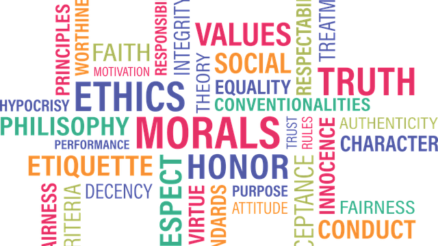For an organization to be successful, it is important that there is effective communication among its employees.
The purpose of internal communication is not to tell employees what they are supposed to do. But it is to align all human resource towards common goal and organizational objectives.
An effective internal communication in an organisation connects and engages employees to accomplish organizational success.
In this article we will discuss what is internal communication in an organization, its types and benefits. Also, we will discuss the challenges of an internal communication.
What is internal communication?
Internal communication is the exchange of information within a company or organization.
Additionally, internal communication refers to the several departments that provide information to employees through various channels.
Internal communication can take many different forms, such as memos, emails, group meetings, and one-on-one conversations.
Let’s see what are different types of internal communication in an organisation
Types of Internal communication
Internal communication is further categorized into:
1. Upward communication
It is the flow of information from lower-level employees to upper-level managers. This type of communication is important for ensuring that managers are aware of what is going on at the ground level, and it can also help to build a sense of trust between managers and employees.
For instance, workers in the HR division of an organization create an attrition report and share it with the HR Manager. The attrition report includes data on an organization’s monthly or yearly employee turnover as well as the factors that contributed to it. This aids the HR manager in identifying the reason for attrition and prompting timely corrective action to lower employee turnover.
2. Downward communication
It is the flow of information from upper-level managers to lower-level employees. Both of these types of communication are important for ensuring that all employees are kept up-to-date on company news and developments.
For example, senior management may provide managers of various departments’ instructions on new rules and regulations that must be followed in the workplace during regular operations of various departments.
Like, the management may alter the office’s operating hours or timings, and the employees are informed of the change by a circular, notice, or email system.
3. Horizontal communication
It is the flow of information between employees who work in different departments or divisions within an organization.
This type of communication is important for ensuring that employees are able to share information and ideas, and it can also help to promote teamwork and collaboration.
4. Change communication
Communicating change is another important aspect of internal communication in an organization. When there are major changes or shifts within the company, it is critical to make sure that all employees are aware of the changes and understand how they will be affected.
This can help mitigate feelings of uncertainty, and can also help to ensure that everyone is working toward the same goals, regardless of any changes in the company.
Change managers often fail to engage their employees by having one-way communication with them and other stakeholders. Change is always smooth when its communication is good.
5. Crisis communication
Getting the right information to the right people as quickly as possible is critical during a crisis. An effective crisis communication plan can help to ensure that all employees are kept up-to-date and informed during a crisis, and can also help to reduce the number of rumors and misinformation that circulates.
Contrary to other forms of internal communication, crisis frequently occur without much warning. However, putting in place a strong crisis communication plan in advance of a problem can help to limit risk, lessen effect, and keep staff members safe.
A multi-channel strategy is typically the best bet, but under the pressure of a time-sensitive or high-stress circumstance, it’s vital to make sure that messages can be distributed effectively. It’s also crucial to make sure you have a mechanism to verify employee safety or receipt.
While senior management is typically in charge of handling crises, one of the most essential requirements for internal communicators is to ensure information is shared before, during, and after a crisis.
6. Activities Communication
It is the process of sharing information about activities, events, and programs within the organization. This type of communication is important for ensuring that employees are aware of what is going on within the company, and it can also help to build a sense of community.
The benefits of effective internal communication
There are many benefits of effective internal communication, including:
- Improved employee morale
- Better employee productivity
- Enhanced customer service
- Reduced turnover
- Increased employee engagement
- Teamwork and collaboration
- Creativity and innovation
- Improved communication between departments
- Boosts sense of community.
Importance of internal communication
Goal-oriented
By taking proactive measures to improve communication within your team, you can help ensure that employees are engaged and motivated to achieve common goals.
This may involve developing a clear communication strategy, utilizing a variety of channels for sharing information, and effectively managing changes within the company.
By understanding the different learning styles, you can tailor your message to be more effective.
For example, if you are giving a presentation, you may want to use more visual aids for those who are visual learners. If you are communicating via email or a group chat, you may want to use more concise, direct language that is easy to understand.
Overall, by focusing on effective communication, you can help to improve the overall functioning of your organization’s goals.
Employee engagement
Employee engagement is a key component of effective internal communication. When employees are engaged, they are more likely to be productive and motivated to achieve common goals.
By taking the time to develop effective strategies for internal communication, organizations can see a wide range of benefits that can help to improve the overall success of the company.
Challenges of internal communication
Despite the many benefits of effective internal communication, there are also a number of challenges that can make it difficult to achieve. These challenges can include:
Lack of feedback
One of the biggest challenges of internal communication is the lack of feedback. When there is no feedback, it can be difficult to gauge whether your message is being received as intended or whether there are any misunderstandings.
This can make it difficult to adjust your communication methods in order to be more effective.
Cultural differences
Another challenge of internal communication is that it can be impacted by cultural differences within the organization. As different departments or teams may have different values and priorities, it can be difficult to create a consistent message that resonates with everyone.
This may require taking extra care to ensure that your communication methods are inclusive and accessible to all employees.
Email burden
Another common challenge of internal communication is the email burden. With the increasing use of email and other digital channels for communication, some employees may feel overwhelmed by the constant influx of messages.
This can lead to an increase in employee turnover, as well as a decrease in productivity and morale.
Lack of resources
Another challenge of internal communication is the lack of resources. This can include both the lack of time and the lack of money to invest in communication tools and training.
When there are limited resources, it can be difficult to develop effective communication strategies and ensure that everyone is on the same page.
Devices and technology
One of the biggest challenges of effective internal communication today is managing a wide range of devices and technologies. With new tools and channels constantly emerging, it can be difficult to keep up and ensure that everyone is using the same systems.
Additionally, employees may also have different preferences for how they receive information, which can make it difficult to create a one-size-fits-all solution.
New Hiring
Common challenge of internal communication is the need to constantly onboard new employees. As your organization grows and changes, you will need to ensure that everyone is up-to-date on the latest strategies and tools for communication.
This can be a time-consuming and resource-intensive process, but it is essential for maintaining a cohesive and effective internal communication strategy.
Final Words
As an organization, it is important to develop effective strategies for internal communication in order to keep your team aligned and working toward common goals. By taking the time to understand the different types of communication and the best ways to reach your employees, you can help ensure that your message is heard and understood by everyone in the organization. Ultimately, effective internal communication in an organization can help to boost collaboration, creativity, and innovation.



